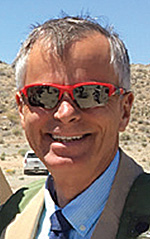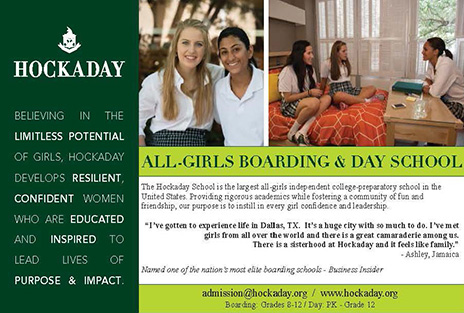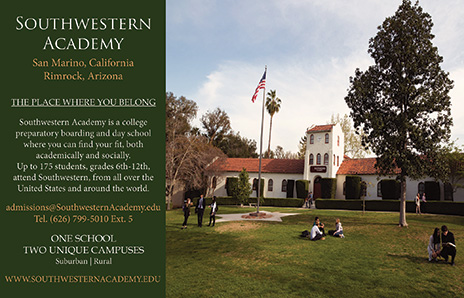Creeping Foreign Policy Militarization or Creeping State Department Irrelevance?
State has ceded some turf to the military, but it’s not too late to regain it and rebalance the civilian-military equation in U.S. foreign affairs.
BY LARRY BUTLER
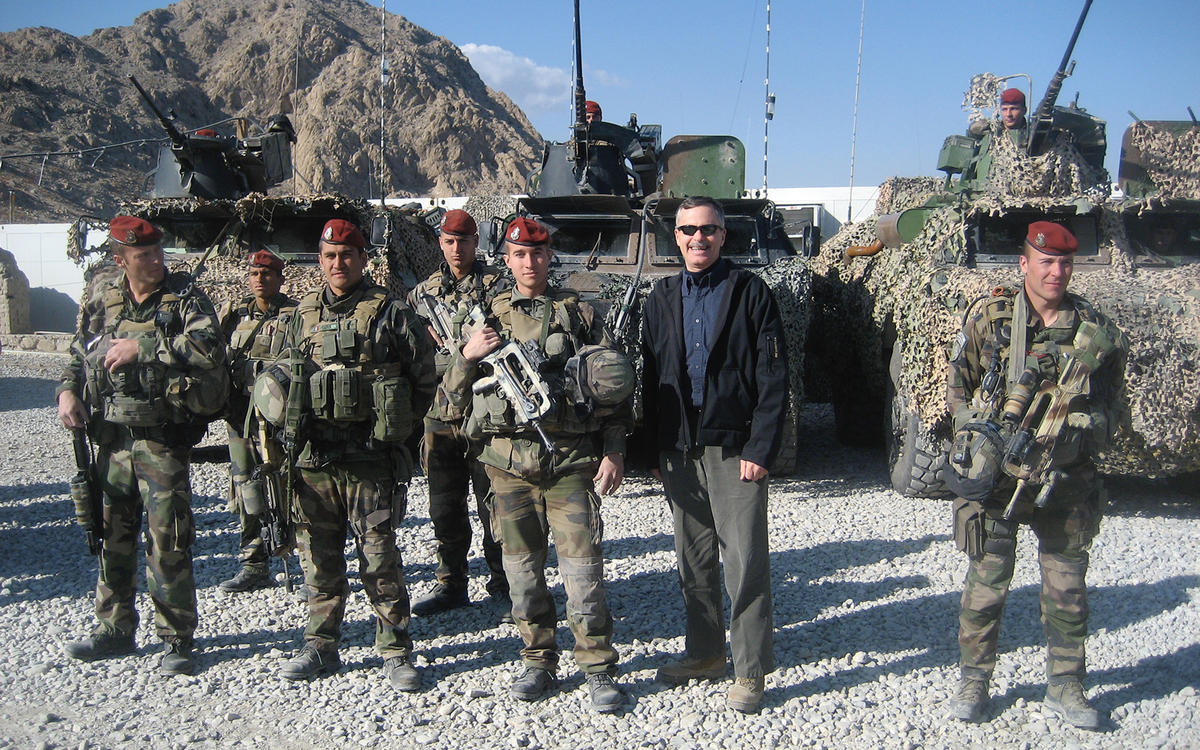
Ambassador Larry Butler (in black jacket) with soldiers of the French Operational Mentoring Liaison Team on a hilltop outpost south of Surobi, Afghanistan, in December 2008.
Courtesy of Larry Butler

A group of foreign policy advisers (POLADs) with Commander of the U.S. European Command Admiral James Stavridis at the U.S. European Command’s Component Commander’s Conference in Naples on Jan. 11, 2013. First row, from left: the late Jonita Whitaker, U.S. Naval Forces Europe POLAD; Adm. Stavridis; Lee MacTaggart, U.S. Marine Forces Europe POLAD; Greg Marchese, U.S. Special Operations Command Europe POLAD. Second row, from left: Colonel Pat Hoffman, XO to Amb. Butler; Matt Boyse, U.S. Army Europe POLAD; Brent Bohne, U.S. Air Force Europe POLAD; and Ambassador Larry Butler, U.S. European Command POLAD.
Courtesy of Larry Butler
Since the fall of the Berlin Wall we have seen a steady outpouring of books and articles lamenting the trend in Washington to see foreign policy through a military lens: Rosa Brooks’ How Everything Became War and the Military Became Everything, Lorelei Kelly’s Unbalanced Security: The Divide between State and Defense, and Gordon Adams and Shoon Murray’s Mission Creep—The Militarization of U.S. Foreign Policy, among others.
Why might one have this view? Is it that the Defense Department’s huge budget, personnel and other capabilities give it an advantage? Is it due to how the military is organized—with geographic combatant commands that have effective control over policy and activities across their areas of responsibility, whereas State’s regional bureaus are misaligned with military counterparts and assistant secretaries deal via turf-conscious bilateral ambassadors numbering up to 40 or more, and have little say over how USAID spends its money?
Has Foggy Bottom lost relevance in the foreign affairs arena by emphasizing soft-power social agendas (e.g., the creation of special envoys for various religions, LGBTQ, the Holocaust, global youth and global women’s affairs) that are distinctly American over hard-power national security interests (e.g., strong international security and healthy economic systems that protect allies and provide opportunities for American businesses)? Or is it, perhaps, simply that the Foreign Service is either late in arriving or missing from the field where the military is operating?
The answer, of course, is all of the above. But there are two broad aspects of the problem that I believe are fundamental: first, the proliferation of priorities at the State Department following the end of the Cold War; and second, the missed opportunities at State during the past 20 years of joint operations with the military to institutionalize the kind of professional and personal relationships that would enable the smaller Foreign Service to exert leadership in the foreign policy arena at home and abroad.
A Proliferation of Priorities
The end of the Cold War and the so-called “end of history” marked a shift for the State Department. We hired a more diverse Foreign Service that, in turn, took on a broader range of narrower activities that more resemble small-picture social engineering than traditional, big-picture diplomacy. At the same time, State reallocated existing resources to create an alphabet soup of new under secretaries, functional bureaus, offices and special envoys. At its peak during the Obama administration, there were more than 50 of the latter. As Ambassador Jim Jeffrey observes in a March 3 piece in Foreign Policy, neither the 2010 nor the 2015 Quadrennial Diplomacy and Development Review focuses on “traditional” diplomacy. The department has diffused its energy too broadly to the neglect of fundamentals, and this, in turn, left a vacuum that the military has had to fill.
New State Department priorities include such things as this, for example. In Muslim-majority Indonesia in 2014 and 2015, not long before the deadly January 2016 extremist terrorist attack on Starbucks and other locations rocked the capital, Jakarta, our consulate in Surabaya produced impressive Hispanic heritage month YouTube videos of its celebrations, which included spending money to bring Los Angeles artists to paint murals on the walls of a local school and sponsor fun runs for local girls. Similarly, in March the U.S. embassy in Macedonia—a country with simmering interethnic tensions and endemic corruption that hasn’t had a government since elections in early December 2016—flew in a lawyer from the Office of the Special Counsel to lecture locals on the Hatch Act, even as refugees streamed north from Greece and European-born Islamic State group fighters returned from Syrian battlefields.
A solely military response is not sufficient. We want to increasingly involve other elements of the U.S. government and the international community, recognizing that it is only through a combination of capabilities that we will achieve and sustain our strongest deterrence posture.
—General Joseph Votel,
Commander, U.S. Central Command,
March 9, 2017
In religiously conservative Uganda, a U.S. Army commander there to train units in combating the Lord’s Resistance Army and al-Shabaab in Somalia had to deal with backlash from an angry counterpart when the U.S. embassy flew the rainbow flag high over Kampala in a righteous response to that country’s persecution of the LGBTQ community. That subsequently set back efforts to combat other forms of violent abuses of human rights in eastern Africa.
One general commented, “If everything is a priority for the State Department, nothing is.”
On its own, each example represents admirable commitment by the Foreign Service to human rights, social progress and good governance policy efforts. But collectively, that commitment ignores the opportunity cost of not prioritizing activities more immediate to countering violent extremism, promoting economic prosperity and strengthening the security necessary to address higher-order human rights and civic goals.
The proliferation of activities that pander to U.S. domestic special interests and divert resources from other work, and whose effectiveness cannot easily be measured, is one aspect of the creeping irrelevance of American diplomacy. This problem has been compounded by the Foreign Service’s apparent unwillingness or inability to work with the U.S. military when they need us the most.
Missing in Action
Since retiring in 2013 from my position as the civilian deputy to the commander of EUCOM, I occasionally help prepare American military units to deal with U.S. embassies in operations abroad. This brings me into contact with officers getting ready to go back to the Middle East and Afghanistan, as well as Europe. At an event earlier this year, I was talking to a Marine heading to a task force operating in western Iraq. He knew I had served as a foreign policy adviser (POLAD) in Iraq, and complained that he did not think there would be a State Department officer out with his task force. He outlined all the (civilian) areas where such a person was needed to advise and guide the task force.
Listening in was a two-star Army general, a battalion commander in Afghanistan in the early years of that conflict. He noted the absence of the State Department in his province at that time, and explained how valuable POLADs and State-led provincial reconstruction teams (PRTs) had been to him later on in Iraq.
The U.S. armed forces remain the only military establishment with global power projection capabilities and experience in managing multinational coalitions. Generals and admirals bestride the highly militarized foreign policy apparatus of the United States government. This caps a longstanding trend. Americans so thoroughly identify “power” as exclusively military in nature that it has been necessary to invent an academic concept of “soft power” to embrace measures short of war like diplomacy.
—Ambassador Chas Freeman,
March 9, 2017
One of my duties at EUCOM was to ensure we were as supportive of our embassies as possible, going so far as to develop our theater and country plans based on each embassy’s Integrated Country Strategy. We extended invitations to ambassadors and deputy chiefs of mission to visit, as well as arranging regional gatherings to develop personal relationships we could draw on in times of crisis. (“You cannot surge trust” is a military adage.)
Yet not every embassy seemed to see the value in investing time with EUCOM. In one case, an important Nordic embassy did not find it convenient to participate in a regional tabletop exercise designed to help us think about how we would defend the Baltic republics in the event of Russian aggression.
During World War II and the Cold War, the military could count on the presence of talented American diplomats nearly everywhere. The best example is that of Robert Murphy, the illustrious American diplomat who was on the ground in North Africa before and after we invaded. Dozens of State and USAID FSOs served in combat zones in Vietnam, some paying for that service with their lives. Those of us who served behind the Iron Curtain, in the Balkans, Africa, Central America and other tough places have similar stories of working solo or alongside our military in dangerous places. One Army officer commented that nothing creates credibility and cements respect among the military more than an FSO who “shares the mud” with them.
Nature Abhors a Vacuum
Fast forward to the wars in Afghanistan and Iraq. The State Department was not just slow in deploying capable personnel to these two war zones, leaving the military to fend for itself in developing governance and restarting economies, but faced strong internal opposition to participating alongside the military—which only accelerated the militarization of foreign policy.
The year 2007 was angst-filled for the Foreign Service. “An Uneasy Partnership—The Foreign Service and the Military” was the focus of the March Foreign Service Journal. The Journal ended the year with a cover story questioning whether State was still in charge of its embassies. As Iraq’s security situation worsened from 2005 to 2007, the need for Foreign Service talent had increased.
When I came on board in January 2007 as State’s deputy assistant secretary (DAS) for Iraq, we urgently needed to staff 15 new provincial reconstruction teams, one for each of the brigade combat teams being sent to the country. In addition to having to find qualified FSOs as team leads, we needed specialized skill sets, such as municipal water engineers or local government budget specialists, that don’t exist within State; and we needed time and help in recruiting them from the outside.
Those FSOs and Civil Service professionals serving alongside division and brigade command staffs generated high regard for American diplomats among their comrades-in-uniform.
The obvious source for that assistance was the department’s Office of the Coordinator for Reconstruction and Stabilization (S/CRS, now the Bureau of Conflict and Stabilization Operations). Even though the White House had put out a directive that every agency would pitch in, S/CRS leadership claimed it was unable to assist as it was too busy elsewhere. The solution was to ask the Defense Department to provide the initial tranche of 129 experts from the ranks of the National Guard or active Reserve, pending replacements. When Secretary of State Condoleezza Rice briefed Congress on this on Feb. 7, 2007, the Pentagon went ballistic. At weekly NSC Deputies Committee meetings, I was beat up by DOD counterparts for not being able to replace those persons fast enough.
In the end, we managed to provide the staffing because the Bureau of Near Eastern Affairs Executive Directorate staff stepped up to the challenge by shifting Human Resources personnel over to the Iraq effort and recruiting the needed skilled personnel via USA Jobs. But the demand only increased. Even as the civilian component of the “surge” in Iraq started flowing, we were struggling to recruit the replacements for the embassy and other PRTs for summer 2008, at a time when AFSA leadership and others were openly negative about the risks and perceived burdens of service in Iraq. In addition, pulling positions from around the world to fill Iraq jobs was putting a strain on embassies in all regions.
This culminated in the disastrous Oct. 30, 2007, town hall meeting convened by the Director General on the topic of directed assignments, which made headlines (when one attendee called Iraq service “a potential death sentence”) and cemented the military’s perception of a Foreign Service lacking the commitment and discipline to serve in hard and dangerous places. Even though there were no directed assignments because enough volunteers did, in fact, come forward, if one were to identify one single event that caused the U.S. military to look at the Foreign Service as unwilling and absent partners, it was that town hall.
The Foreign Service’s Finest Hour
By the end of that very difficult year, the State Department had recovered some status with the military because it deployed the additional provincial reconstruction teams, FSO-led and staffed by a mix of military and USAID/civilian experts, embedded within U.S. Army brigade combat teams, plus dozens of POLADs serving in military units in Iraq over the course of the conflict. This was the Foreign Service at its finest. Those FSOs and Civil Service professionals serving alongside division and brigade command staffs generated high regard for American diplomats among their comrades in uniform.
At the same time, the Bureau of Political-Military Affairs oversaw a dramatic expansion of the POLAD program—from about two dozen, mostly former chief-of-mission FSOs, to nearly 90, ranging from mid- to senior-ranked FSOs representing all functional cones. The result was that the U.S. military started to get used to seeing FSOs, and not just when serving in or visiting embassies or maybe in combat operations. The tide of foreign policy militarization was turning as more and more FSOs learned how to leverage military assets to State’s benefit.
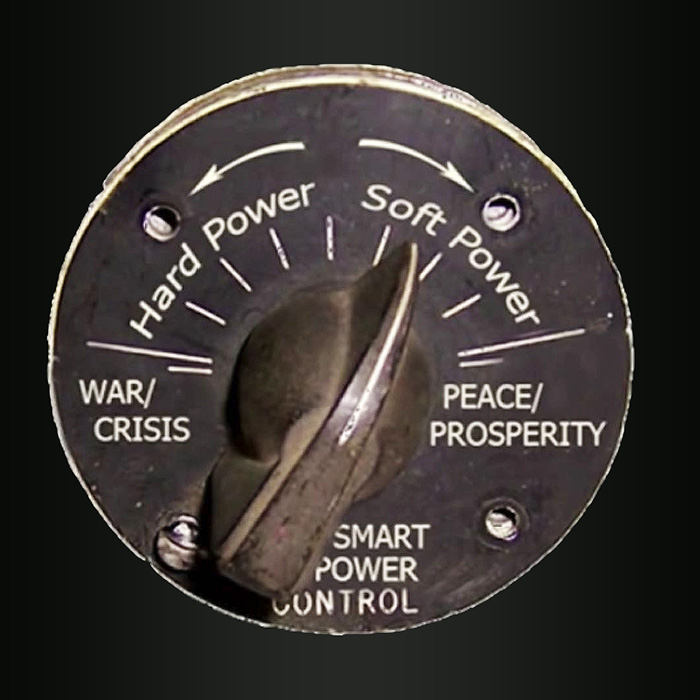
Life is not an on-and-off switch. You do not need to have a military that is either in hard combat or is in the barracks. I would argue life is a rheostat. You have to dial it in. And as I think about how we create security in the 21st century, there will be times when we will apply hard power in true war and crisis. But there will be many instances…where our militaries can be part of creating 21st-century security: international, interagency, private-public, connected with competent communication.
—Admiral James G. Stavridis, in his Accidental Admiral: A Sailor Takes Command at NATO (2014)
If there was any downside to this, it is that the Foreign Service was drawing not on a talent pool of capable officers but a puddle—something Ambassador Jim Jeffrey alluded to in his March 3 Foreign Policy article. Not every FSO POLAD could bring the desired experience, knowledge or interpersonal skills needed to succeed. That is a nice way of saying we fielded some duds, which was sometimes worse than not fielding anyone.
Added to the challenge of finding qualified FSOs to bid on these jobs is the fact that POLAD service is not seen as careerenhancing— an open secret that was underscored in 2013 in an unfortunate, pre-EER season DG cable that lumped those assignments together with academic training or diplomat-in-residence positions as akin to taking a year off.
All good things do come to an end. By the time U.S forces withdrew from Iraq at the end of 2011, a new high point had been reached in FSO-military engagement. Concomitantly, however, influence with the military receded rapidly because we failed to lock in a sustainable level of interaction. With up-or-out personnel systems common to both the military and the Foreign Service, the cohort of people with experience in working with their respective services is shrinking and not being replenished. Today the only places where rising FSOs can develop lasting relationships with military counterparts are either in POLAD assignments or in the military’s senior service schools, where only a dozen or so FSOs spend a year. That adds up to about 100 FSOs per year, a fraction of the size of the Service, in meaningful interaction with the military.
Today, astonishingly, not all of the U.S. division and corps headquarters rotating in and out of Iraq, Kuwait and Jordan have been assigned FSO POLADs. Nor have the smaller units operating inside Iraq or Syria, or those going to Europe as part of our European Reassurance Initiative for allies concerned about Russian intentions.
What State Can Do Now
If the State Department wants to claw back some of the turf it has ceded to the military, it is going to have to dig deep to find the positions and people to deploy with the military and to foster an organizational climate that encourages and rewards its people for investing a year or two to serve with the military’s current and future leaders.
I would recommend the following specific actions:
We could knock off all the ISIL and Boko Haram this afternoon; but by the end of the week…those ranks would be filled… Many people, especially those in uniform, have said we can’t kill our way to victory here… The short answer is no, we cannot [win the war without soft power].
—General Thomas Waldhauser,
Commander, U.S. Africa Command,
March 9, 2017
• Build relationships in advance—the center of gravity for State-DOD interaction is with the geographic and functional combatant commands, the partnered State National Guard and the Army division assigned as the regionally aligned force. Every chief of mission should visit the division headquarters that covers his or her country, as well as the adjutant general of their country’s partnered State National Guard, before leaving Washington. Make a call on the combatant commander a priority during the first 100 days at post.
• The State Department should prioritize recruiting senior officers who still have five to 10 years left on active duty to serve as deputy commanders in the three combatant commands that have them (EUCOM, AFRICOM and SOUTHCOM) and as POLADs at all combatant commands; those who do well should be prioritized for onward chief-of-mission or geographic bureau leadership positions.
• Recruit, train and deploy FS-2s and FS-3s who were recently high-ranked by promotion boards to serve with every task force, division and corps-level headquarters that operates in combat operations.
• Invite combatant commanders to provide input to COM evaluations; this will give ambassadors incentive to develop productive relationships and influence.
• Re-establish the flag/general officer deputy assistant secretary position in the Bureau of Political-Military Affairs.
• Double the number of FSOs attending the military’s mid- and senior-level service schools; give priority to FSOs who have served as POLADs or in other positions with the military.
• Make joint service with the military a bonus in consideration for promotion and a prerequisite for assignment to leadership (DCM and COM) positions.
Ambassador Ryan Crocker’s Country Team in Iraq
Diplomacy is the art of letting the other guy have your way. Ryan Crocker arrived in Baghdad as the new U.S. ambassador in 2007 with General David Petraeus. Petraeus saw his command grow to more than 150,000 troops during the surge, while Crocker headed a much smaller (though large by State Department standards) mission with perhaps 2,000 diplomats, provincial reconstruction team members and support staff. In addition to a huge advantage in terms of personnel, Petraeus’ commanders had piles of their own money to spread around without embassy or USAID oversight, giving them even more influence in the field.
Despite working from a disadvantaged position, Ambassador Crocker skillfully established himself as Petraeus’ supporting peer, leading the general to proclaim Crocker his “wingman.” Rather than take offense at the imagery of being the junior partner, Crocker communicated to his deputies, who included at least five former ambassadors, that the embassy would follow the military’s lead given that it was bearing the brunt of beating back the al-Qaida-led insurgency.
Amb. Crocker thus developed wasta (clout, in Arabic) with the military. He understood that Petraeus’ success increased his own political leverage with Iraq’s leaders— something every diplomat should understand and try to replicate. This wasta devolved to his country team and FSO PRT heads, enabling them to influence what the military was doing in areas normally the purview of the embassy, such as engaging with Iraqi provincial councils.
Crocker’s tenure is a case study in developing a personal relationship that rebalances the diplomatic-military relationship.
Among other things, Crocker drew on his wasta to block a ploy proposed by members of Petraeus’ staff to hijack control over how U.S. money was being spent by replicating the embassy’s economic assistance and transition office. Initially operating on its own in Iraq, Defense had begun improvising. One outcome was the DOD Task Force for Business Stability Operations—not exactly a military skill set, and known in Iraq as the Brinkley Group, after its first leader.
In May 2007, The Washington Post highlighted the State-versus-DOD controversy over this small organization, noting that TFBSO had its own view of how to restart Iraq’s economy (get the moribund state-owned enterprises going), which was diametrically opposed to what Embassy Baghdad was doing, and worked independent of embassy or USAID oversight.
This became an example of a failure of unity of effort across all elements of national power. If one believed TFBSO press statements of the day, Americans would be buying Iraqi-made toilets in Walmart today. However, one would be hard pressed to find any evidence that TBFSO was ever present in Iraq, much less find an Iraqi toilet in an American store. Amb. Crocker politely informed Gen. Petraeus that the embassy had this setting on the smart power dial covered, and TFBSO went away. (It later migrated to Afghanistan, where it also succeeded in provoking controversy.)
Crocker’s tenure in Iraq is a textbook case study of developing a personal relationship that rebalances the diplomatic-military relationship. The postscript to this is the strained relationship that Crocker and Petraeus’ successors had to endure, with the U.S. effort in Iraq going off the rails for a year until it was reset when another strong State-DOD team arrived in the form of Ambassador Jim Jeffrey and General Lloyd Austin.
—Larry Butler

